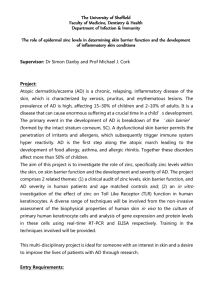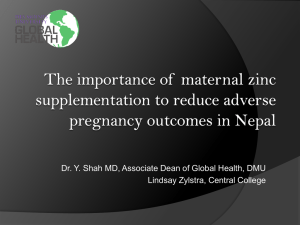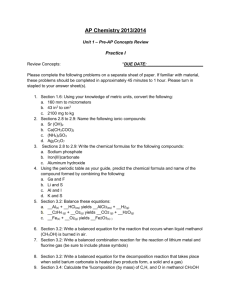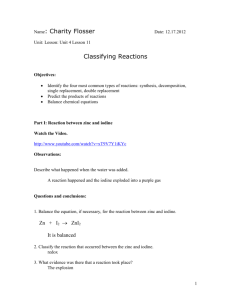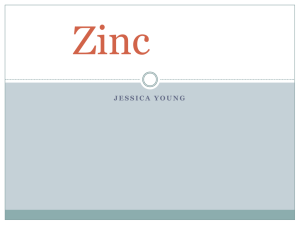ZINC EFFICACY: Adult, inconclusive DOCUMENTATION: Adult, fair
advertisement
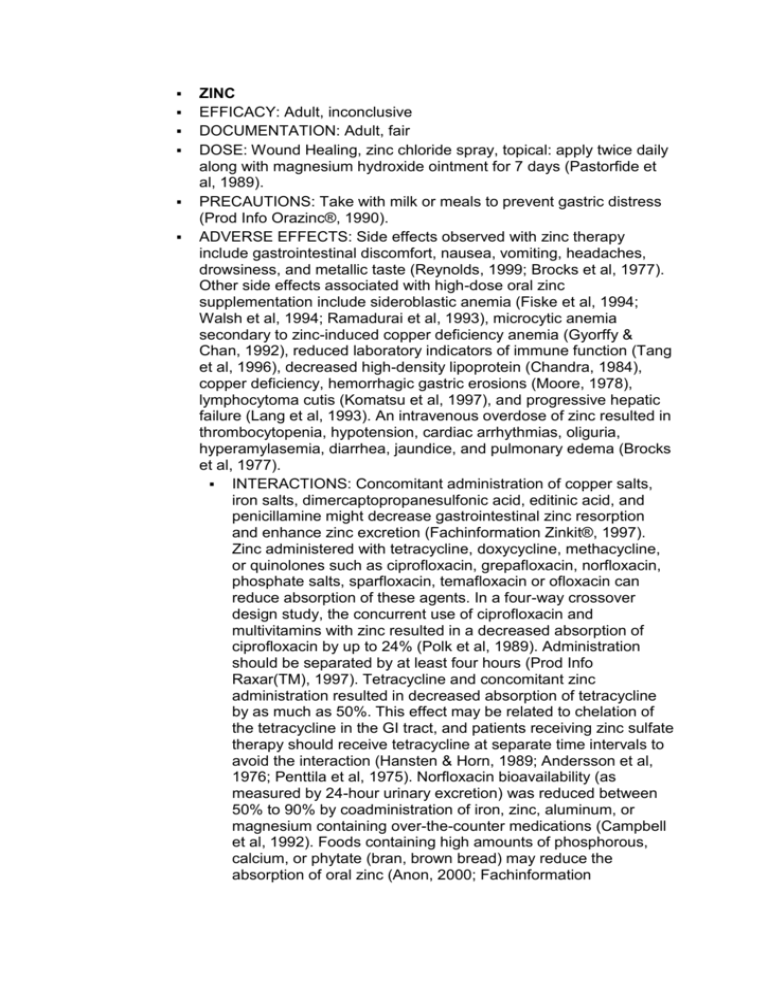
ZINC EFFICACY: Adult, inconclusive DOCUMENTATION: Adult, fair DOSE: Wound Healing, zinc chloride spray, topical: apply twice daily along with magnesium hydroxide ointment for 7 days (Pastorfide et al, 1989). PRECAUTIONS: Take with milk or meals to prevent gastric distress (Prod Info Orazinc®, 1990). ADVERSE EFFECTS: Side effects observed with zinc therapy include gastrointestinal discomfort, nausea, vomiting, headaches, drowsiness, and metallic taste (Reynolds, 1999; Brocks et al, 1977). Other side effects associated with high-dose oral zinc supplementation include sideroblastic anemia (Fiske et al, 1994; Walsh et al, 1994; Ramadurai et al, 1993), microcytic anemia secondary to zinc-induced copper deficiency anemia (Gyorffy & Chan, 1992), reduced laboratory indicators of immune function (Tang et al, 1996), decreased high-density lipoprotein (Chandra, 1984), copper deficiency, hemorrhagic gastric erosions (Moore, 1978), lymphocytoma cutis (Komatsu et al, 1997), and progressive hepatic failure (Lang et al, 1993). An intravenous overdose of zinc resulted in thrombocytopenia, hypotension, cardiac arrhythmias, oliguria, hyperamylasemia, diarrhea, jaundice, and pulmonary edema (Brocks et al, 1977). INTERACTIONS: Concomitant administration of copper salts, iron salts, dimercaptopropanesulfonic acid, editinic acid, and penicillamine might decrease gastrointestinal zinc resorption and enhance zinc excretion (Fachinformation Zinkit®, 1997). Zinc administered with tetracycline, doxycycline, methacycline, or quinolones such as ciprofloxacin, grepafloxacin, norfloxacin, phosphate salts, sparfloxacin, temafloxacin or ofloxacin can reduce absorption of these agents. In a four-way crossover design study, the concurrent use of ciprofloxacin and multivitamins with zinc resulted in a decreased absorption of ciprofloxacin by up to 24% (Polk et al, 1989). Administration should be separated by at least four hours (Prod Info Raxar(TM), 1997). Tetracycline and concomitant zinc administration resulted in decreased absorption of tetracycline by as much as 50%. This effect may be related to chelation of the tetracycline in the GI tract, and patients receiving zinc sulfate therapy should receive tetracycline at separate time intervals to avoid the interaction (Hansten & Horn, 1989; Andersson et al, 1976; Penttila et al, 1975). Norfloxacin bioavailability (as measured by 24-hour urinary excretion) was reduced between 50% to 90% by coadministration of iron, zinc, aluminum, or magnesium containing over-the-counter medications (Campbell et al, 1992). Foods containing high amounts of phosphorous, calcium, or phytate (bran, brown bread) may reduce the absorption of oral zinc (Anon, 2000; Fachinformation Zinkorotat®, 1995; Pecoud et al, 1975). Caffeine and dairy foods also reduce absorption of zinc (Pecoud et al, 1975). REGULATORY/SAFETY INFORMATION: U.S. Food and Drug Administration (FDA) approved for the treatment of zinc deficiencies, Wilson's disease, and acrodermatitis enteropathica and as an astringent to relieve minor eye irritations. FDA Pregnancy Category A (Briggs et al, 1998). Zinc is available as dietary supplement in the United States under the Dietary Supplement Health and Education Act of 1994 (DSHEA). COMPARATIVE EFFICACY: Not available. LITERATURE REPORTS: Although controlled clinical studies are not available, it has been suggested that oral intake or topical application to wounds can promote healing and reduce infection (Lansdown, 1996). In zinc deficiency, wound healing is retarded. Acute inflammatory reactions can reduce plasma zinc levels by causing sequestration of zinc by the liver. Increased excretion of zinc by surgical patients can also lead to low serum levels. Healing of incisional wounds was faster when incisions were treated with zinc chloride spray followed by a magnesium hydroxidecontaining ointment than when treated with the same spray and ointment without the mineral compounds. The abdominal and perineal incisions of 85 obstetric and gynecologic patients were sprayed, allowed to dry for 30 seconds, and the ointment was applied with a tongue blade to completely cover the wound. The applications were made twice daily, with dressing changes at each application, for 7 consecutive days. Decreases in wound length between days 1 and 4 were significantly greater, the time to total healing was shorter, and the incidence of infection was lower in the mineral group than in the placebo group (Pastorfide et al, 1989). In a double-blind, controlled study of patients with leg ulcers, zinc deficiency impaired wound healing. Twenty-seven patients were separated into 2 groups: those with low zinc levels (less than 110 micrograms percent (mcg%)) and those with normal levels. Each group was treated with either placebo or oral zinc sulfate 200 milligrams 3 times daily for the course of wound healing. Although all groups had virtually identical rates of healing in the first 2 weeks of treatment, the zinc-deficient patients taking placebo showed a marked slowing in the rate of healing thereafter. The deficient patients treated with zinc sulfate showed rates identical to those of the zinc-normal patients as measured by change in wound diameter with time until complete healing. In deficient patients, zinc stores were restored in 3 weeks and the serum reached saturation levels of 150 mcg% in 6 weeks (Hallbook & Lanner, 1972). A systematic evaluation of literature from 1966 to 1997 concluded that healing of leg ulcers is not improved by oral zinc supplementation (Wilkinson & Hawke, 1998).



